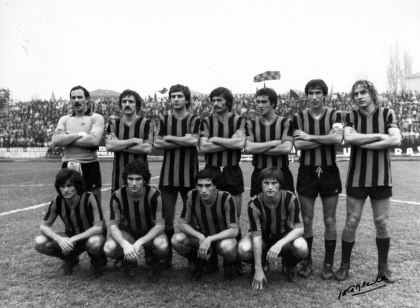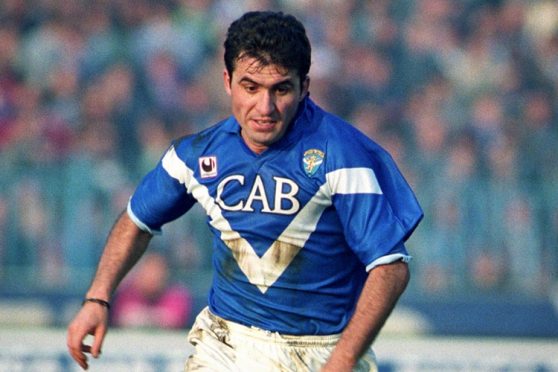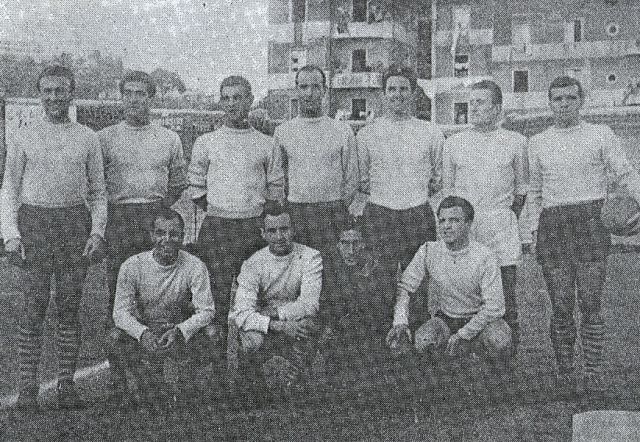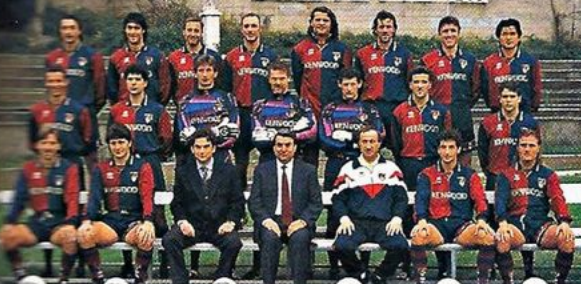Football is an emotional rollercoaster for supporters. When you’re winning, things could hardly be better. If your side puts in a good performance to match the result, even better.
Then you have the flip side. A loss can be gut-wrenching. A string of defeats leads to a feeling of despair. And then you have the worst-case scenario: relegation. Being relegated is often a humiliating experience. It highlights loudly and clearly that the team simply were not good enough over a sustained period. There is no sugar-coating it.
Most clubs have had to endure the embarrassing ordeal. In Italy, Inter are the only team to have never been relegated from the top-flight. Juventus and Milan are now viewed as two of the most iconic clubs in European football, but even they have spent some time in Serie B for one reason or another.
Then again, there are also some teams who punch above their weight and just fall short in the final standings. These sides are tipped for relegation at the start of the season, but give it their all to upset the odds.
No matter the path to the dreaded drop, there have undoubtedly been some very good teams who have been relegated from Serie A over the years. We wanted to take a look at the five best teams to have been demoted from Italy’s top division.
The process for figuring this out has not been straightforward. Serie A has lurched from 16 to 18 and then finally settling on 20 teams in the league, whilst they did not change to three points for a win until 1994.
In order to do this, the points per game have been calculated as if it has always been three points for a win to make things simpler. Teams that have been relegated for non-footballing reasons such as bankruptcy or match-fixing scandals have also been disqualified from the final results.
So, here we go. According to the statistics, these are the five best sides to ever be relegated from Serie A.
5. Lucchese – 1951/52 (1.13 PPG)

We start back in the early 1950s. Lucchese are a small club based in the beautiful region of Tuscany who have spent much of their time in the lower divisions since their formation in 1905.
Yet they found themselves in Serie A in 1951/52, and were keen to make the most of it. They started the campaign impressively, winning two of their opening three matches. Things swiftly went downhill, though, as they lost five of their next seven league fixtures. Despite this disappointing run, Lucchese refused to lie down. They picked up wins against high-flying Lazio and Inter to prove that they could match the bigger clubs on their day.
Indeed, in the return match at San Siro, Lucchese pushed Inter all the way before eventually losing 4-3. The team finished with 11 wins to their name across the course of the season. Unfortunately for them, this was not enough for them to avoid the relegation play-off.
Their opponents in that contest were Triestina. Lucchese flew into a two-goal lead at the interval, but were pegged back in the second half. The game finished 3-3 after extra time, meaning that a replay was required the following week to settle the score. In a quieter affair, Triestina triumphed 1-0, sealing Lucchese’s fate. A brave effort from the Serie A minnows, but it was ultimately a heartbreaking outcome. They have not returned to Serie A since.
4. Hellas Verona – 2001/02 (1.15 PPG)

Half a century later, it was Hellas Verona’s turn to count themselves a little unfortunate. Much like Lucchese, they began the season well. Having been handed the daunting task of facing defending champions Roma to kick-off the campaign, Verona delivered an accomplished display to secure a 1-1 draw.
Boasting a strike-force that included Adrian Mutu and future World Cup winner Alberto Gilardino, Verona should have been able to stay above the drop zone. Wing-back Massimo Oddo and nifty winger Mauro Camoranesi were also part of the squad which lifted the sport’s greatest prize in 2006.
Mutu played his part, chipping in with 12 league goals, but Gilardino could only add two as Verona fell away alarmingly in the second half of the season.
Having been seventh after 22 games, Verona’s form nosedived in the final 12 matches. The side lost nine of those fixtures to drop into the bottom four. They had the chance to rescue themselves on the final day, only to slip to a tame 3-0 defeat against fellow strugglers Piacenza. The 1985 Serie A champions were down, and wouldn’t make it back to Italy’s top table until 2013.
3. Brescia – 1992/93 (1.15 PPG, superior goal difference to Hellas Verona)

Do you remember when a Fiorentina side containing Gabriel Batistuta, Dunga, Brian Laudrup and Stefan Effenberg was relegated from Serie A? Almost 30 years on, it is still scarcely believable. Well, guess what? They actually finished below this Brescia team in the table.
In 1991/92, Brescia were promoted to the top-flight as champions. They had lost just three games all season. A newly-promoted club often has difficulty staving off relegation in their first season in Serie A.
However, in the summer of 1992, Brescia – highlighting the allure of Serie A – ludicrously signed Gheorghe Hagi. That’s right, somehow they managed to tempt the Romanian icon away from Real Madrid and over to Italy. Surely that would be enough to steer them to safety?
After spending much of the first half of the season in mid-table, Brescia started to slip down the league at the turn of the year. They edged past Udinese 2-1 in their opening game of 1993, but then proceeded to lose six of their next seven matches. In fact, they failed to score in all six losses.
A 3-1 defeat to Inter in April appeared to leave Brescia doomed but they rallied in the final six matches. Three wins and three draws earned them a place in the relegation play-off ahead of Fiorentina. Udinese awaited them.
Former Roma and Lazio player Sergio Domini netted his first goal of the season to no avail as Udinese scored twice after the break to win 3-1.
Within a year, Hagi, Batistuta, Effenberg and co. had guided their teams back to Serie A. Yet it remains in the record books that these three superstars of the 90s were all relegated in same season.
2. Salernitana – 1947/48 (1.18 PPG)

The 1947/48 season was Salernitana’s first-ever campaign in the top-flight. It was only fitting that they made it a memorable one, right?
Looking back, this was destined to be strange season from the outset, with 21 teams competing as Triestina were allowed into the top division as a ‘guest’, which was frankly bizarre, and Salernitana’s results then lurched from sublime to ridiculous.
In their fourth game, they dispatched Lucchese 5-2. Three weeks later, they shared the spoils in a 3-3 thriller with Napoli, before then suffering a crushing 7-1 defeat to the all-conquering ‘Grande Torino’ side in their next match. If you were looking for entertainment, Salernitana were providing it.
Similarly to Brescia, Salernitana were let down by their form in the middle section of the season. The team lost six of their seven matches in January and February, earning just a single point in these two months. Still, they kept going, thrashing mid-table Pro Patria 5-0 in May, and beating that season’s runners-up Milan 4-3 the following month.
A 1-0 victory over Inter on the final day was Salernitana’s 13th win of the season. Usually that would be enough to remain above the relegation zone. On this occasion, it wasn’t. Roma ended the season a point ahead of the club from Campania. It would be 50 years before Salernitana returned to the top-flight again.
1. Genoa – 1994/95 (1.18 PPG)

At the start of the 1990s, Genoa had one of their best seasons ever as they finished fourth in Serie A in 1990/91. Their success was somewhat overshadowed by arch-rivals Sampdoria winning the league, though.
Nevertheless, Genoa had an outstanding team to boast about. With forwards Carlos Aguilera and Tomas Skuhravy scoring 15 goals apiece in the league, they were a force to be reckoned with.
Having qualified for the UEFA Cup, Genoa then set their sights on making a splash in Europe. They swatted aside Liverpool on their way to the semi-finals, only to come up short against Ajax. A young Dennis Bergkamp scored the tie-deciding goal for the Dutch giants. He went on to be pretty decent, didn’t he?
Despite flourishing in Europe, Genoa’s domestic form suffered. They narrowly avoided relegation in 1992, and then again in the two seasons that followed. Going into the 1994/95 campaign, they were heading in the wrong direction. Skuhravy was still at the club, but Aguilera had moved on. In his place was a Japanese forward named Kazuyoshi Miura. Remarkably, over a quarter of a century later, Miura is still playing back in his homeland for Yokohama FC.
Unfortunately, Miura was unable to deliver in Serie A. Featuring in 20 games, he scored just a solitary goal for the club. Genoa would end the season with just 34 goals from their 34 matches. Only the three sides below them found the net on fewer occasions.
It was not all doom and gloom for Genoa, though. They picked up victories over Roma and Inter, offering a reminder of their glory days from the start of the decade. This enabled them to book a place in the relegation play-off, having amassed 40 points.
In the deciding match against Padova, Skuhravy got on the scoresheet to take the game to penalties. However, Padova edged the shootout 5-4 to remain in Serie A. Genoa’s rapid fall from grace had reached its nadir, and it took 12 years for the club to return.
Words by: Sam Brookes. @sam_brookes2

